Mountain Photography with James Grant
Making Mountain Memories
Mountains are a magical place for me. They provide me a place where I can rest my mind and escape the responsibilities of daily life, they offer lesser seen photographic opportunities, they provide some of the most magical and unexpected weather conditions and they provide me with a solitude you just don’t get from places lower down, especially in an increasingly popular world of social media where pictures can often become a collector’s item. A shot, usually with ones-self in it, to bag that location, to showcase how well travelled you are. Often spending less than 10 minutes in a place and barely looking around.
Let’s just dial back though. Why did I get into mountain photography? Well, don’t get me wrong, I don’t just do mountain photography. Photography for me is about taking pictures of special places in a single moment never to be repeated again. However, the mountains are where I feel at home and where I feel best. Before I bought a camera, I started off hill walking with my first proper high place being Kinder Scout in Derbyshire, and at 636m it qualifies to be a mountain in UK standards. Anyone that knows this mass of earth though would potentially argue otherwise.
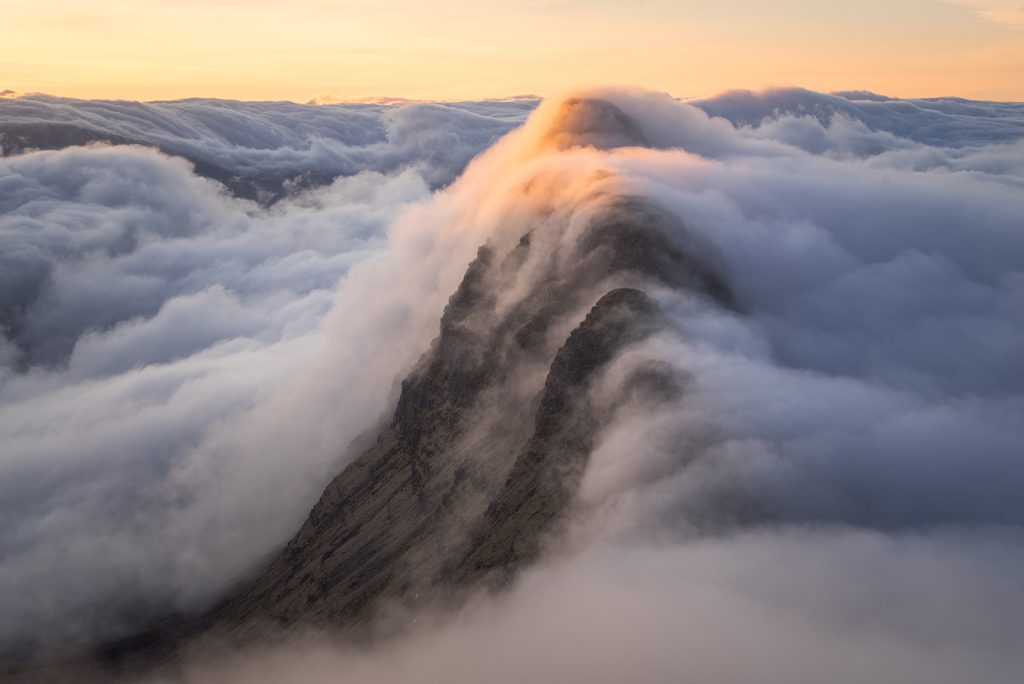
I then purchased a camera not long after, purely just to document my times in the hills. I had no real ideas about what time of day to be there etc, I just wanted to have photos for when I was senile, I would be able to look back on them and remember the good times. I was only 20 at the point of making this choice!
I soon started having people praising my photos and I quickly won a couple of major competitions. One of the prizes was a week-long workshop in Snowdonia and it became apparent that I perhaps was better than I gave myself credit for.
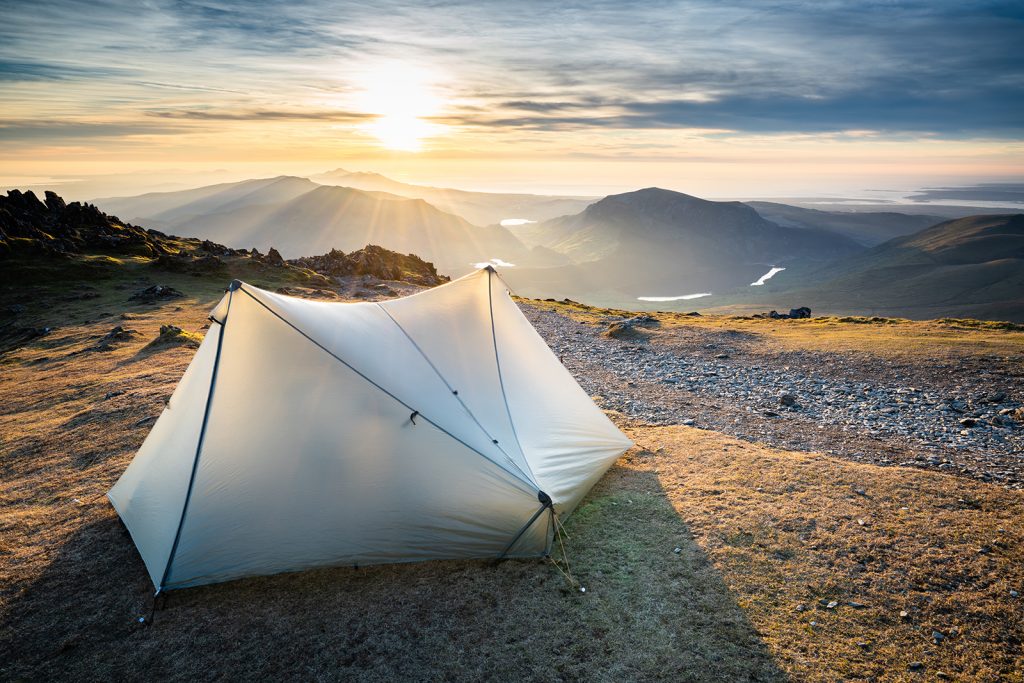
I quickly discovered wild camping, a way of heading up the mountains and having an opportunity to capture both sunrise and sunset, or should I say 2 chances of capturing some decent light? It was also a good way to take a lot of the effort out of lugging yourself up a hill for an hour or so in the morning, only to be disappointed. You only have to poke your head out of the tent to see if it’s worth it or not.
Things progressed from there, over the years gaining more experience and confidence. The mountains can of course be a dangerous place but I am happy both camping up a hill or even walking up/down in the dark. Me and my partner got a campervan in 2015 and this only aided in my quest to capture more unique moments.
But why do I do this?

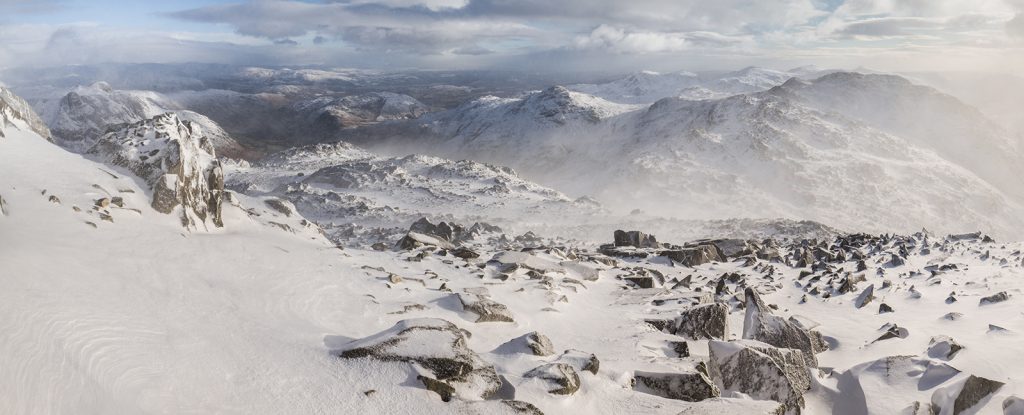
Well, I just love big vistas. The feeling you get when you reach a summit can’t be matched. Capturing that feeling can be a tough challenge but one I aim to achieve. Mountains are often deserted in the golden hours and there’s nothing better than feeling like you both have the mountain to yourself and that you may be the only person taking a photo of that particular view with those particular conditions, never to be repeated. I am lucky enough to have a few shots in my portfolio which will be hard to replicate, even if I went up the mountains every day for the rest of my life. That’s what it’s about. Making Mountain Memories.
I can’t quite explain the feeling when everything goes right. There is a genuine sense of adrenaline when the light just breaks through those big brooding skies or suddenly the cloud you were once stuck in breaks to reveal the amazing views.
Of course, there are many disappointments along the way. Many times I have climbed a mountain to not get anything. Yes, they frustrate me but I always try and take a step back and remind myself that I am fortunate enough to be able and healthy enough to climb these mountains and it’s as much about being outside as taking photos. I do sometimes think if I didn’t have a camera, I would still love visiting these places. In fact, I purposefully go out on my mountain bike without a camera to take me back to these roots. Speaking of having to keep trying, there are many occasions I have climbed a mountain three times to get the shot I want. That mountain may be 8 or more hours away. That’s another consideration. You may look at my portfolio and think I’m lucky but I don’t really document or publish the times I didn’t take a photo or get the conditions I want.
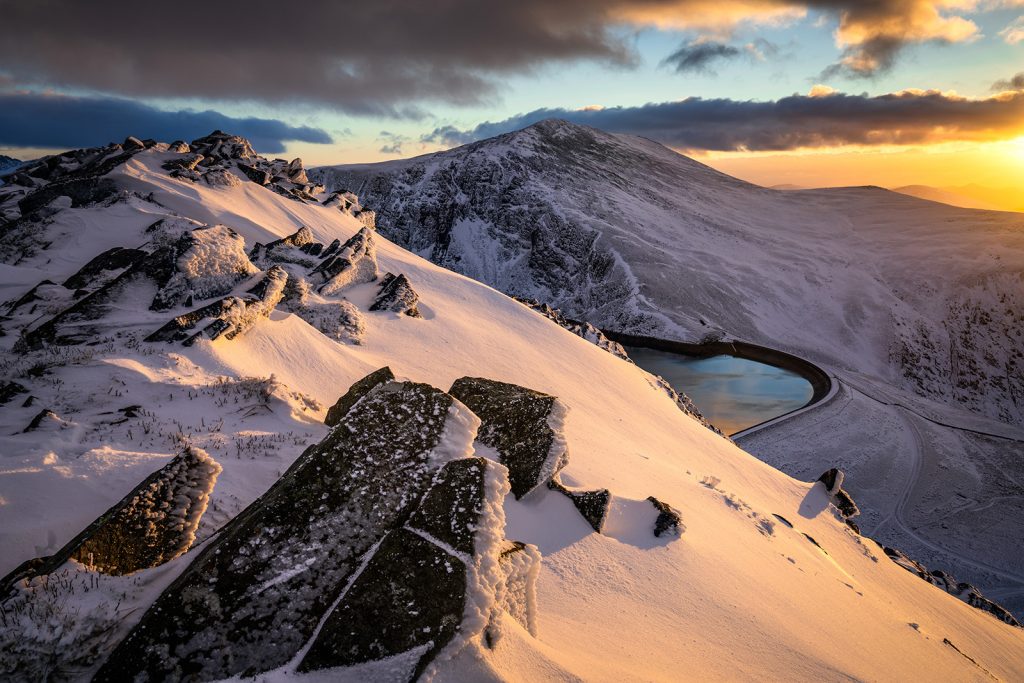
So what does it take to climb mountains and photograph them?
Well a certain level of competence and fitness is a must, obviously. There are degrees of technical difficulty. Some mountain views, especially over on the continent can be achieved by driving or chair lifts but for the most part in the UK, you have to work for your reward.
You need to be able to navigate. You also need the correct equipment, a head torch being one of the main ones! I’m not saying you should be able to count paces and take bearings (useful) but map reading skills are a must. Some routes are obvious and if you’re doing it linear, then things are less likely to go wrong. A quick check of a GPS app with proper mapping can often get you by but shouldn’t be solely relied on. Start small and safe and build both confidence and competence over the years, I know I’m certainly much better than 10 years ago.
We also have to think about camera equipment. I am using a Sony full-frame mirrorless with F4 lenses. This kind of setup really does help keep the bulk and weight down. To compliment it, I use a Gitzo GT1545 tripod. It really is lightweight and small but much sturdier than a lot of the other travel tripods. Also, no other brand has the height of this tripod for the same kind of weight and the height is important for me at 6ft7. It wasn’t cheap but it was worth every penny. You then need to consider more what you don’t need to carry than what you do, so I take only the essential lenses. If I am taking filters, I will try to think what filters are important and am I likely to use. A polariser usually goes and if there’s a waterfall or pool of water then maybe a ND too.
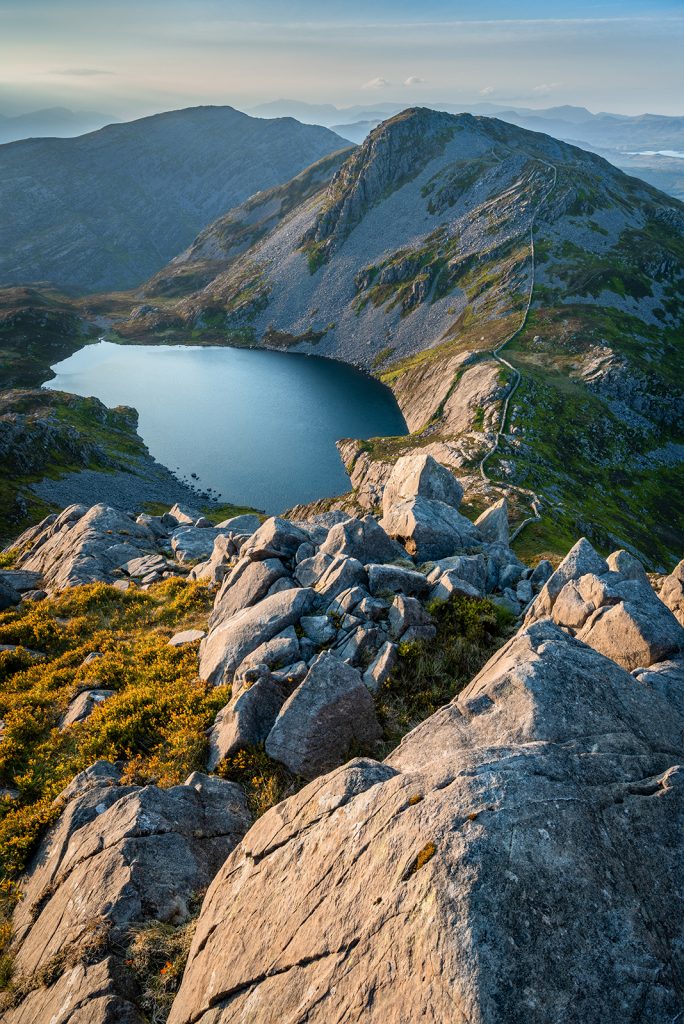
I carry all my kit in a normal hiking bag. I find Osprey ones good and have various choices depending on the length of the trip. I can fit all my camera gear in a Tenba BY0B 10 insert which works really well. Try and find a bag with compartments and easy access to the camera otherwise you won’t be bothered to use it. Finally, I do occasionally walk with the camera on my strap via a Peak Design clip which works well.
A typical day hike would consist of:
Sony A7R iv
Sony 16-35mm F4 (bread and butter lens)
Sony 70-200mm F4 (good for getting details)
Sony 24-105 F4 but this is usually a walkabout lens. This may stay at home.
Kase CPL on a magnetic ring.
Gitzo GT1545 Tripod
Waterproof coat and trousers.
Winter clothing if needed, even in spring and autumn!
Map and compass
GPS device
Food and drink.
First aid kit
Water filter
Head Torch
I also own a personal locator beacon in case of emergency but these are costly. I tie it in with my workshops for safety of everyone.
It’s then a case of just keep going and keep trying. One of the things I would say that’s easier about mountain photography is higher up, you have less issues with the sun being blocked by other mountains, which you find you get down in the valleys. There are also less concerns about seasonal variation too. There’s still prime times and there’s still plenty of planning but your window can be longer, which is a good thing because you may need to wait for the weather.

The more I do photography, the more I want to photograph the less seen. That seems strange already finding the more remote places as it is but it feels good to know you may have one of the only shots from a place and potentially even the best. My photography is always evolving and I always try to better myself. Being a professional also doesn’t play a big part in my actual photography because these shots I get, I get for myself and no one else. Mountain photography isn’t commercially a big market and I don’t expect to sell a lot of workshops in the mountains either. The clientele for that kind of thing is a much smaller portion of the market. So it’s good to have it for my own purpose and if others enjoy it, brilliant. If others feel inspired to go up a mountain then even better.
James Grant is a professional landscape photographer who specialises and loves all things mountains, hills and coast. He is based on the border of the stunning Peak District National Park, where he has spent many years exploring every nook and cranny, subsequently producing Amazons most reviewed book on the area called Peak District Through The Lens. Consumed with a passion to explore, he has travelled further afield into the higher mountains of Wales, the Lake District and Scotland, often camping on high mountain tops in the hope of capturing something special.






